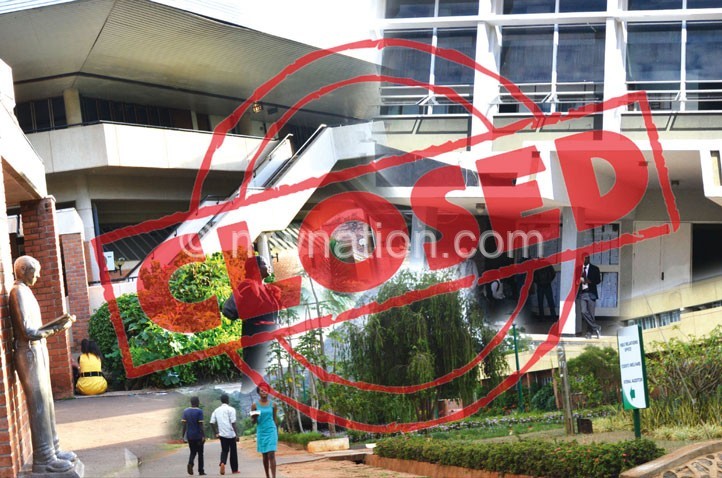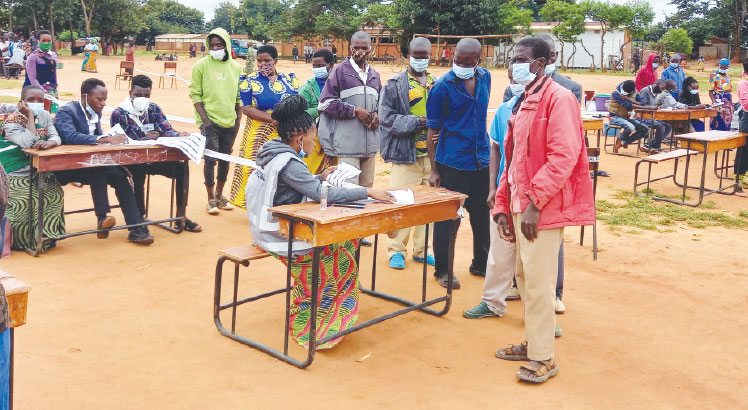College closures costing govt millions of kwacha
Government continues to lose billions of kwacha year-in, year-out due to frequent closures of higher learning institutions following strikes either by staff demanding pay increase or students protesting something, experts have said.
Experts’ observations follow continued closure of university colleges and other tertiary institutions in the country.

In July this year, there was disruption of classes in University of Malawi (Unima) constituent colleges over the fee hike while The Malawi Polytechnic remains closed.
And end September, all three campuses of Health Sciences in Lilongwe, Blantyre and Zomba closed and they remain so following strikes by staff demanding pay increase, and on the other hand, Lilongwe University for Agriculture and Natural Resources (Luanar), NRC campus, is also closed following a strike by students.
When all Unima constituent colleges, namely College of Medicine (CoM), Chancellor College (Chanco), Kamuzu College of Nursing (KCN) and The Malawi Polytechnic shut down due to a strike for a day, more than K299 million goes down into the drain.
If the number of days of the strikes in all the four constituent colleges of Unima accumulates to a month, the monetary wastage comes roughly to K8.97 billion, using 2015 constant figures [calculations] (carried in 2015 Ministry of Education Performance Report).

According to the figures, each year per student has a cost of K2 024 630 at Chanco, K9 298 736 at Polytechnic, K30 985 749 at CoM and K12 562 126 at KCN, translating to daily expenditure per student of K5 500, K25 000, K85 000 and K34 000 respectively.
The figures presented in the 2015 Ministry of Education Performance Report emanates from ORTs (other related transactions), and according to an education expert, Limbani Nsapato, 70 percent of the money in ORTs is meant for lecturers’ salaries.
What this means, he said is that this money would still be spent even where the lecturers are not taking their classes through their salaries.
Supposing all these four constituent colleges of Unima closed at the same time, the cost per student would average around K37 375 per day which translates to K1.1 million per month or K13.6 million per year.
Unima’s intake for first year hovers around 2 000, meaning from year one to four, the students should be more than 8 000.
Nsapato said there are other hidden losses that may not be quantified, and if one were to consider other public universities such as Mzuzu University and Luanar, the losses would be higher than the figures presented.
He said the disruptions also affect quality of education because apart from potential losses in student learning time, there are strong questions around consistency in delivery of lecture content.
“ F u r t h e r m o r e , t h e disruptions lead to lost income at personal level as well as at national level since when employed graduates receive salaries which address household priorities, and pay taxes which significantly contribute to the national income,” Nsapato said.
Responding to a question where cohorts clash due to the disruptions, the education expert said there was a need to urgently address the root causes of the disruptions that come up when students or lecturers strike.
This, he said, included providing adequate funding to the universities to cater for lecturer and student needs, ensure an effective communication system as well as dialogue mechanism and resolve potential conflict or misunderstanding that may lead to strikes.
Another educationist, Dr Steve Sharra, said it was sad that government spends between K2.5 million and K5 million to educate a student in a government university per year yet unnecessary closures are entertained.
Sharra said universities end up paying for services that are not being used, and are not contributing to productive capacity.
Said Sharra: “There are industries, institutions and organisations that rely on new graduates to go out and fill existing vacancies and staff shortages. Schools need teachers and hospitals need doctors and nurses.
“Delaying their graduation affects these services, which affects efficiency, and ultimately the economy. So quantifying the costs of these strikes and stoppages needs to consider all these factors,” Sharra said.
The education expert said in a situation where cohorts clash due to delays in opening or stoppages, the best way would be to increase classroom space and expand teaching staff so as to allow as many students waiting in the wings to enter university.
T h e u n i v e r s i t i e s , h e suggested, might also want to consider offering online learning options to students waiting for their turn to enroll.
Recently, President Peter Mutharika told the United Nations General Assembly in USA that Africa needed to invest in education if the African nations were to develop, but Sharra said the only indication that Malawi is investing enough in education is in the intent when planning the budget.
Efforts to talk to Unima officials and those of Ministry of Education proved futile as they had not yet responded to our questionnaires as we went to press.





